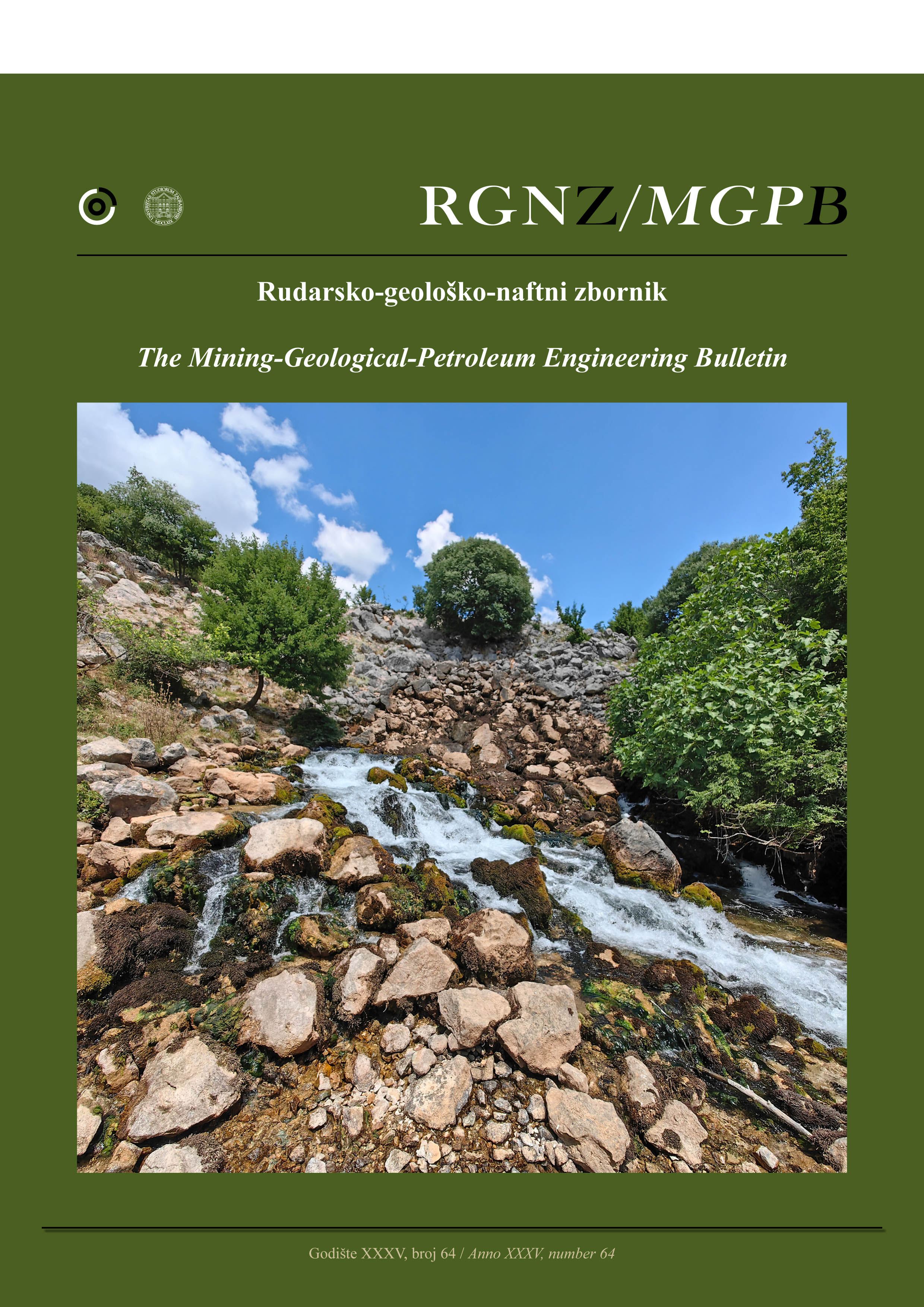Seismic imaging beneath Sumatra Island and its surroundings, Indonesia, from local-regional P-wave earthquake tomography
DOI:
https://doi.org/10.17794/rgn.2023.3.10Keywords:
Sumatra, BMKG, P– wave, tomography, slab, faultAbstract
Sumatra Island and its surroundings, Indonesia, are one of the most active tectonics in the world. The Aceh-Andaman
earthquake, one of the most destructive earthquakes in the world, occurred there. It has attracted many earth scientists
to apply various methods, including seismic tomography, to understand the island’s subsurface structure and tectonic
system. This study is the first to delineate subsurface imaging beneath the island and its surroundings using a local-regional earthquake catalogue from the Indonesian Agency for Meteorology, Climatology, and Geophysics (BMKG) seismicnetwork. The tomographic imaging of P-wave (Vp) conducted in this study has successfully delineated subduction slabs (high Vp), partial melting zones (low Vp), volcanic arcs (low Vp), and Sumatran Fault zones (low Vp). The relationship
between the subduction zone and the volcanic arc on the island can be seen on several vertical sections where a partial
melting zone occurs at a depth of about 100 km, which functions as magma feeding for some volcanoes on the island. The oceanic slab model also exhibits a more pronounced and steeper slope towards the southern regions of Sumatra Island, possibly attributed to the slab’s aging process in that direction. The results highlight the importance of the BMKG seismic network in imaging local-regional subsurface structures beneath Indonesia’s archipelago, especially for the main islands such as Sumatra.
Downloads
Additional Files
Published
How to Cite
Issue
Section
License
Copyright (c) 2023 Dr. Bayu Pranata, Dr. Mohamad Ramdhan, Muhammad Hanif, Muhammad Iqbal Sulaiman, Mufti Putra Maulana, Dr. Wandono, Prof. Dr. Sri Widiyantoro, Dr. Sandy Kurniawan Suhardja, Dr. Edi Hidayat, Dr. Pepen Supendi, Ridwan Kusnandar, Wiko Setyonegoro

This work is licensed under a Creative Commons Attribution 4.0 International License.
Creative Commons-BY
Authors who publish with this journal agree to the following terms:
In agreeing this form, you certify that:
- You read the ethical codex of the RGN zbornik available at journal web.
- You submitted work is your original work, and has not previously been published and does not include any form of plagiarism.
- You own copyright in the submitted work, and are therefore permitted to assign the licence to publish to RGN zbornik.
- Your submitted work contains no violation of any existing copyright or other third party right or any material of an obscene, libellous or otherwise unlawful nature.
- You have obtained permission for and acknowledged the source of any illustrations, diagrams or other material included in the work of which you are not the copyright owner.
- You have taken due care to ensure the accuracy of the work, and that, to the best of your knowledge, there are no false statements made within it.
- All co-authors of this submitted work are aware of, and in agreement with, the terms of this licence and that the submitted manuscript has been approved by these authors.
Publication licence
You retain copyright in your submitted work, according to journal license policy (CC-BY). By signing this form you agree that RGN zbornik may publish it under the publication licence. In summary the licence allows the following:
Anyone is free:
- To copy, distribute, display, and perform the work.
- To make derivative works.
Under the following conditions:
- The original author must always be given credit.
- The work may not be used for commercial purposes.
- If the work is altered, transformed, or built upon, the resulting work may only be distributed under a licence identical to this one.
Exceptions to the licence
In addition to publishing the work printed under the above licence, RGN zbornik will also enable the work to be visible online.
The journal editorial can change the licence rules anytime but it cannot retroactively restrict author(s) rights.


